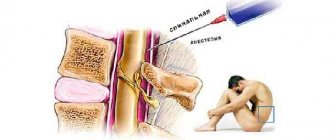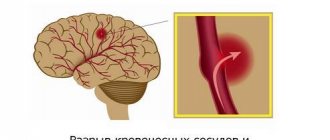Schizophrenia is a mental illness that occurs with rapidly or slowly developing personality changes of a special type (reduction of energy potential, the presence of autistic tendencies, decreased affect, loss of unity of mental processes).
Consequences of schizophrenic psychosis
The development of such a personal deficit is due to the presence of various so-called productive symptoms and syndromes, which, in turn, determine schizophrenic psychosis: affective, delusional, hallucinatory (mainly pseudohallucinatory), hebephrenic, catatonic, as well as oneroid clouding of consciousness. Based on the greater severity of a particular syndrome, the type of schizophrenia is determined. Although the productive symptoms of the disease are specific not only to diseases of the schizophrenia spectrum, their combination with a specific personality defect leads to the formation of syndromes characteristic of this disease with natural dynamics.
The development of the disease, especially during psychotic attacks, leads to distortion or loss of social connections, decreased mental activity, and severe behavioral disturbances, especially with exacerbation of delusions, hallucinations and other productive disorders.
What are the causes of schizophrenia?
Schizophrenia is a very common mental illness. Characteristic of schizophrenia are disturbances in perception and thinking. Accompanied by emotional and volitional disorders, as well as behavior that significantly deviates from the norm. The term “schizophrenia” was proposed by Bleuler, a Swiss psychopathologist.
Schizophrenia-like symptoms have been documented as early as 2000 BC. Physicians from different eras periodically described symptoms reminiscent of schizophrenic disorder. Even Avicenna, in his work “The Medical Canon,” described a mental disorder that resembled schizophrenia.
They began to analyze schizophrenia in more detail only at the end of the 19th century. Kraepelin, a German psychologist, observed adolescents who suffered from various psychoses. Later, it was he who established that all patients at a certain stage develop a state of special dementia. It was then called “dementia praecox.” Other psychiatrists gradually expanded information about the emerging symptoms and outcomes of this disease. Bleuler suggested and later proved that the disorder can occur not only in adolescence, but also in adulthood. Later they also proved that a characteristic feature of schizophrenia is not dementia, but a violation of the unity of the psyche. The concept was supported by many psychiatrists.
Diagnostics
In our medical center, special attention is paid to client examination. Establishing an accurate diagnosis in psychiatry is important not only for the preparation of correct therapy, but also for social aspects. A number of diseases may pose a professional limitation, so no mistakes are allowed during diagnostic procedures.
The diagnosis includes:
Collection of complete anamnestic data. The onset of painful manifestations, their dynamics, and the presence of light gaps must be taken into account. Doctors obtain this information from the words of patients or relatives, as well as from available medical documents and studies.- Client inspection. The psychiatrist assesses the status of the functions of internal organs and the nervous system. Particular attention is paid to examining the psyche for the presence of disturbances of consciousness, delusional statements, illusory and hallucinatory visions.
- Research of laboratory tests. Patients must have their blood and urine collected to obtain general clinical and biochemical parameters.
- Taking an electrocardiogram.
The diagnostic process continues throughout the entire period of patients’ stay in the clinic. If necessary, adjustments and additions are subsequently made to the main diagnosis.
Reasons for the development of schizophrenia
Until now, it has not been possible to establish the main cause of the development of schizophrenia, despite the high level of development of medicine. Most psychiatrists agree that genetic predisposition is one of the main reasons. For example, if someone in the family had schizophrenia, then all blood relatives increase the risk of developing this mental pathology. But the type of inheritance remains unknown.
Also influence:
- Low social status. — Poor living conditions. - Poverty. - Dysfunctional family. - Drug addiction. - Alcohol addiction. — Traumatic brain injuries. — Prolonged psychotraumatic situations.
In some cases, schizophrenia can develop after prolonged stressful situations, but in the vast majority of patients the disorder occurs spontaneously.
Forms of schizophrenia
Today, there are several forms of schizophrenia.
— The paranoid form is the most common form of schizophrenia today. Characterized by autism, thinking disorders, inadequacy of emotions and a decrease in their intensity. The disorder is accompanied by delirium. Delusions can manifest themselves as ideas of persecution that are not accompanied by hallucinations. Ideas of grandeur or ideas of impact may also arise. For example, a patient may claim that someone is influencing them, that they are trying to manipulate them.
— The hebephrenic form is the most malignant. Characterized by manifestations of foolishness, childishness, and inappropriate excitement. Patients suffering from this form of schizophrenia may laugh, behave childishly, and then behave aggressively, destroying everything in their path. The speech of patients is inconsistent and may be full of made-up words and repetitions. In some cases, it may be accompanied by cynical abuse. As a rule, the disorder is detected in adolescence.
— The catatonic form is characterized by significant impairment of motor function. Patients may remain in an unnatural and very uncomfortable position for a long time. There is no fatigue. They understand words, commands and requests, but they refuse to respond to them. Complete immobility can be replaced by bouts of excitement, rash and very sudden actions and movements. In some cases, patients copy the speech, movements and facial expressions of their interlocutor.
— Simple form . The simple form of schizophrenia is characterized by negative symptoms. Characteristic is complete indifference to the surrounding world, indifference to oneself, and inactivity. Gradually the patient is protected from the outside world. At first, a person may refuse to work or study, after which he breaks off relations with family, friends, and relatives. Often people with this form of schizophrenia wander. Over time, knowledge, memories and skills are lost. Now we can talk about schizophrenic dementia.
Atypical forms of schizophrenia also occur. Atypical forms include:
Schizoaffective psychosis is a condition in which paroxysmal affective and schizophrenic symptoms occur: hallucinations, delusions, manic, mixed and depressive symptoms. The above symptoms develop during one attack. But the general picture of behavior does not correspond one hundred percent to either schizophrenia or manic-depressive psychosis.
Schizotypal disorder. Characterized by hysteria, obsessive phenomena that resemble neurosis. But by neurosis they mean a certain reaction to a certain traumatic situation. Whereas it is generally accepted that schizophrenia occurs spontaneously. To put it simply, the development of schizophrenia is not a response to a stressful situation.
Febrile schizophrenia, which is an acute form of the disorder. Accompanied by pronounced signs of toxicosis. Patients' temperature rises, and somatic disorders occur: hemorrhages (both subcutaneous and intraorgan), tachycardia, severe dehydration. There is also a catatonic syndrome, delirium, which has fantastic content. Patients in this state are extremely confused and can make completely meaningless movements. The patient will not be able to say who he is or where he is. Febrile schizophrenia is different from neuroleptic syndrome, although we are talking about a similar set of symptoms. The latter can occur after taking psychotropic drugs.
What are rare forms of delusional psychoses?
Rare forms of delusional psychoses have several varieties, including:
- Paranoia. - Late paraphrenia. — Acute transient psychoses. — Chronic delusional disorders are a separate group of mental disorders, the main (sometimes the only) symptom of which is the brand. At the same time, delusional visions cannot be considered a manifestation of schizophrenia, organic or affective disorders.
The main factors that provoke the occurrence of the disorder are: genetic predisposition, certain personality characteristics, as well as living conditions and environment.
Paranoia manifests itself in increased sensitivity, suspicion, and jealousy. Such patients are able to see the catch in every action of another person. They remember grievances for a long time and do not take criticism at all. Patients with paranoia are wary of almost every person. Sometimes such patients develop ideas of persecution or grandeur, which result in entire conspiracy theories directed against them. A person with such psychosis can write numerous complaints against an imaginary offender and begin legal proceedings against him.
After a period of confusion, which is accompanied by insomnia and a constant feeling of anxiety, acute transient psychosis occurs. The main manifestation of psychosis is acute delirium, which has a sensual origin. The structure of delirium changes quite quickly. The most common ideas are persecution, influence, staging. Delusions of a double, as well as false recognitions, may also occur. Auditory distortions and hallucinations are also common. As a rule, they quickly replace each other.
Clinical picture of the pathology
Schizoaffective psychosis can occur in several forms, differing not only in symptoms, but also in recommended treatment tactics.
Affect-dominant form
The disease is characterized by relatively early manifestation. As a rule, the first symptoms appear at puberty (12–15 years). The specialist pays attention to signs of affective lability with sudden mood swings. The teenager has too active gestures, facial expressions, and overly expressed emotional reactions.
The depressive component predominates, which is accompanied by:
- decrease in appetite up to complete lack of appetite;
- losing weight;
- apathy;
- sleep disorders;
- sloppiness due to lack of interest in one’s own appearance, failure to observe even basic hygiene;
- pessimism, thoughts of suicide may appear.
A schizoaffective attack is usually triggered by external factors. The patient is delirious and hallucinating. Without professional intervention, symptoms increase, reach a peak, then all symptoms develop in reverse order until remission occurs.
During a recession, there are no specific signs, and changes in behavior are invisible to others. But relatives notice that the patient practically does not express emotions (or rather skillfully pretends), is passive, and avoids any active activity.
Schizodominant form
With this type, symptoms of schizophrenia predominate. Sensual delirium is predominantly noted: hallucinations and imaginary images arise, which become the basis for delusional ideas.
The acute phase is characterized by Kandinsky-Clerambault syndrome, which includes:
- Ideational automatism. The patient is sure that his thoughts are known to others, that someone can intervene and influence the subconscious, etc. Vivid dreams are possible in which real and fictional events are intertwined.
- Sensory automatism. It seems to the patient that he is experiencing fever or, conversely, extreme cold. Sometimes he is sure that such sensations are the result of the influence of external forces (sorcerers, aliens, demons, etc.).
- Motor automatism. A person is convinced that all his actions, words and even facial expressions are controlled by others.
The duration of an attack in the schizodominant form is much longer - at least 6–7 months (in the absence of therapeutic measures).
Before the first attack, symptoms increase gradually; mood swings, aggression, and hysteria predominate. The prodromal period can last up to 2 years. The exacerbation begins abruptly, without the influence of any external causes.
Features of the course of schizophrenia
Today, there are three main types of schizophrenia:
- Continuous. - Periodic. - Paroxysmal.
Continuous schizophrenia is characterized by steadily progressive dynamics. This species is divided into several subtypes: malignant, moderately progressive, and sluggish.
Symptoms in continuous schizophrenia may fade or worsen. But there is no high-quality fixed remission. Both social and clinical prognosis for such schizophrenia are unfavorable. The vast majority of patients are forced to undergo inpatient treatment or stay in psychoneurological boarding schools. As a rule, as a result, patients receive the first group of disability. Only after many years do patients experience some relief of symptoms, so that they can remain at home while remaining unable to work.
If we are talking about periodic schizophrenia, there are productive mental disorders that occur only occasionally. They do not entail significant personality changes. The number of periods of exacerbation may vary. For example, one patient may have only one attack in his entire life, while another may have over ten. One attack of schizophrenia can last several days or even months. They can be either identical or completely different from each other. The social and medical prognosis for this type of schizophrenia is very favorable. This can be explained by an insignificant number of personality changes or their complete absence (as a result of persistent intermission). The prognosis may worsen due to the severity, intensification or increase in the frequency of schizophrenia attacks.
The most common type is paroxysmal schizophrenia. This type of disorder is characterized by the presence of attacks that are accompanied by poor remission. Each new attack leads to personality distortions, as well as to the fact that delusions become more serious, lasting and destructive. Social and clinical prognosis depend on the frequency of attacks and their severity. The most unfavorable prognosis is for fur-like schizophrenia, which leads to the rapid formation of a personality defect. But in sluggish fur-like schizophrenia, the prognosis is relatively favorable. Other types of schizophrenia are at intermediate stages.
How to diagnose schizophrenia
The diagnosis can be made only after the disease has lasted longer than six months. A prerequisite is a disability, as well as a violation of social adaptation.
In order to establish schizophrenia in a patient, it is first necessary to exclude the possibility of developing affective disorders, drug addiction, and alcoholism, which could also cause psychopathological symptoms. It is very problematic to distinguish catatonic and paranoid schizophrenia from infectious, somatogenic, toxic and traumatic psychoses that last a long time.
Its specific clinical manifestations help identify schizophrenia:
- Emotional dullness. - Volitional disorders. - Impaired thinking. — Suicidal behavior in schizophrenics
Suicidal behavior refers to actions aimed at voluntarily taking one's own life. In the context of schizophrenia, we can talk about suicidal behavior only if a person engages in them quite consciously. The patient should not be in a psychotic state, nor should he have pronounced personality defects. Otherwise, such behavior can be classified as auto-aggressive.
Statistics show that about half of people with schizophrenia attempted to commit suicide over a twenty-year period of the disease. But only ten percent were fatal. Suicidal behavior is a good reason to consult a psychologist. The best option would be to hospitalize the patient.
Is it possible to cure schizophrenia?
The vast majority of people with schizophrenia require ongoing, qualified help. To provide the necessary care, patients are admitted to a psychiatric hospital. Hospitalization will help ensure the necessary level of supervision, as well as the ability to record minimal changes in condition. Additionally, psychological tests and studies are carried out, and the details of the disease are established experimentally.
Despite the high level of development of schizophrenia, to date it has not been possible to find methods that can completely cure schizophrenia. But the methods of therapy that are applied to patients make it possible to almost completely restore the patient’s daily and social functioning, as well as significantly alleviate the condition and minimize the number of relapses. Psychopharmacotherapy plays a significant role in treatment.
Three groups of drugs are used for treatment:
- Antidepressants. - Neuroleptics. - Tranquilizers.
Drugs can be prescribed for different periods: a week, a month, several years, or even for life. It is only important to understand that a positive result will come faster if treatment is started earlier.
Is it necessary to treat schizophrenia with psychotropic drugs?
Neuroleptics are necessary for patients who are in acute condition. Drugs are selected depending on the symptoms of exacerbations. If a hostile, aggressive mood dominates, antipsychotics are used. They have a sedative effect on the body.
For hallucinatory-paranoid symptoms, it is necessary to prescribe typical antipsychotics. The polymorphism of symptoms also requires the use of typical antipsychotics, which have a broad antipsychotic effect on the body. But sluggish schizophrenia must be treated with small doses of antipsychotics and antidepressants. If we are talking about sluggish schizophrenia, which is accompanied by obsessions and phobias, sedative tranquilizers are used.
Side effects of antipsychotics
For quite a long time, the use of antipsychotics led to their intolerance. Intolerance can manifest itself as side effects of the nervous system, as well as the development of complications (neurolepsy, tardive dyskinesia). To avoid side effects, drugs are prescribed that do not or practically do not cause such neurological symptoms. If dyskinesias do appear, the patient is prescribed antiparkinsonian drugs. If symptoms of depression appear, the patient is prescribed antidepressants. It is important to consider that only a doctor can prescribe drugs. It is the doctor who adjusts the dosage and duration of use. Changing the dosage on your own or interrupting the drug is prohibited - this may lead to an increased risk of relapse.
Experts' forecasts
The main difference between schizophrenia and recurrent schizophrenia is the consequences of recovery from psychosis. In the second case, subject to timely and correct treatment, the patient does not experience a residual schizophrenic defect after an exacerbation. This means that his behavior will lack such manifestations as passivity, apathy, loss of social connections, irreversible emotional flattening (lack of reaction to what is happening).
As a rule, after therapy, the patient may be left with short-term and insignificant phenomena, such as increased fatigue, a feeling of inadequacy, etc. After a short time, they disappear, and the person has the opportunity to return to his previous life.
Despite the favorable prognosis, this does not make this disease easier or less significant. It is strictly contraindicated to refuse treatment or do it yourself. After a course of therapy, the patient must follow the doctor's instructions. At the same time, the patient is prescribed not only drugs that relieve and prevent possible recurrences of schizophrenic symptoms. During this period, the patient also needs to take mood-stabilizing medications.











